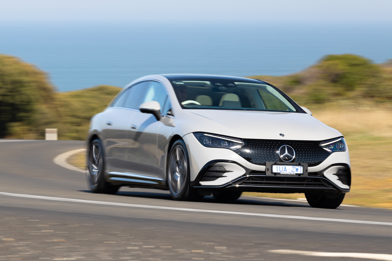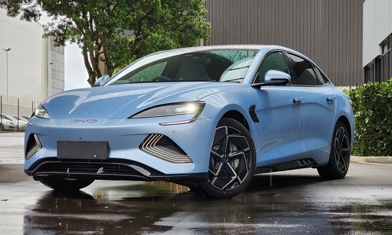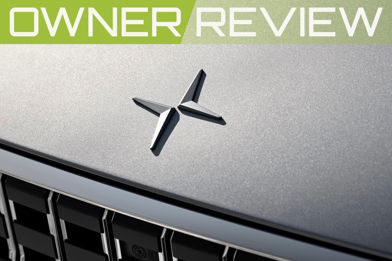While Tesla’s latest product launch here might be scoring all the headlines, it is worth remembering that the technical marvel that is Full Self Driving (Supervised) - that (Supervised) is a very important legal distinction - is actually inside a car. In our case, the recently updated Model 3.
The Model 3 we got our hands on to test FSD(S) was something we have only rarely experienced in the past - a RWD model, albeit with upgraded 19-inch wheels.
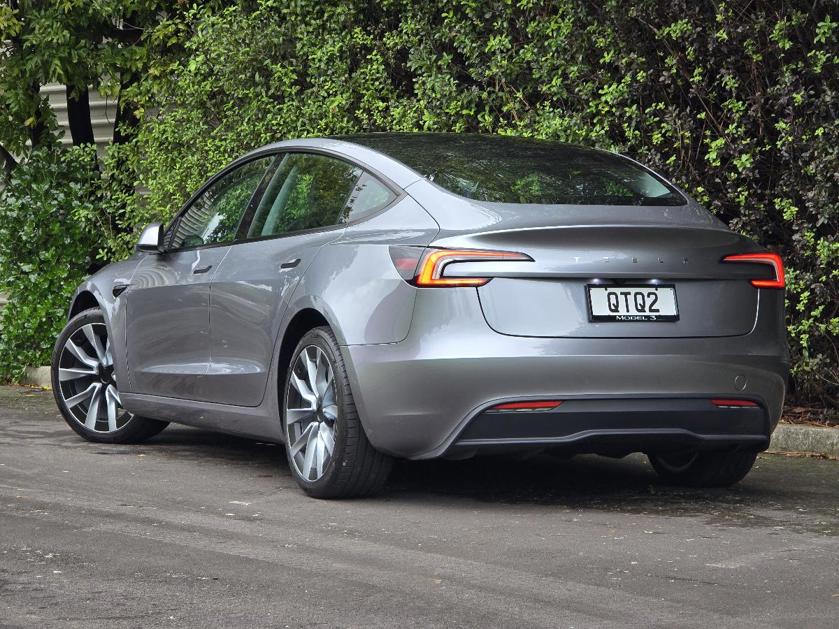
Previously Tesla has preferred to give out higher-end AWD models, so the humble RWD models are often overlooked. But here’s the thing - I am firmly of the opinion that you learn the most about a car from its top and bottom spec models, with the entry level being where the real telling attributes lie.
And in the case of the Model 3, that entry level spec is telling me what a genuinely good car it actually is.
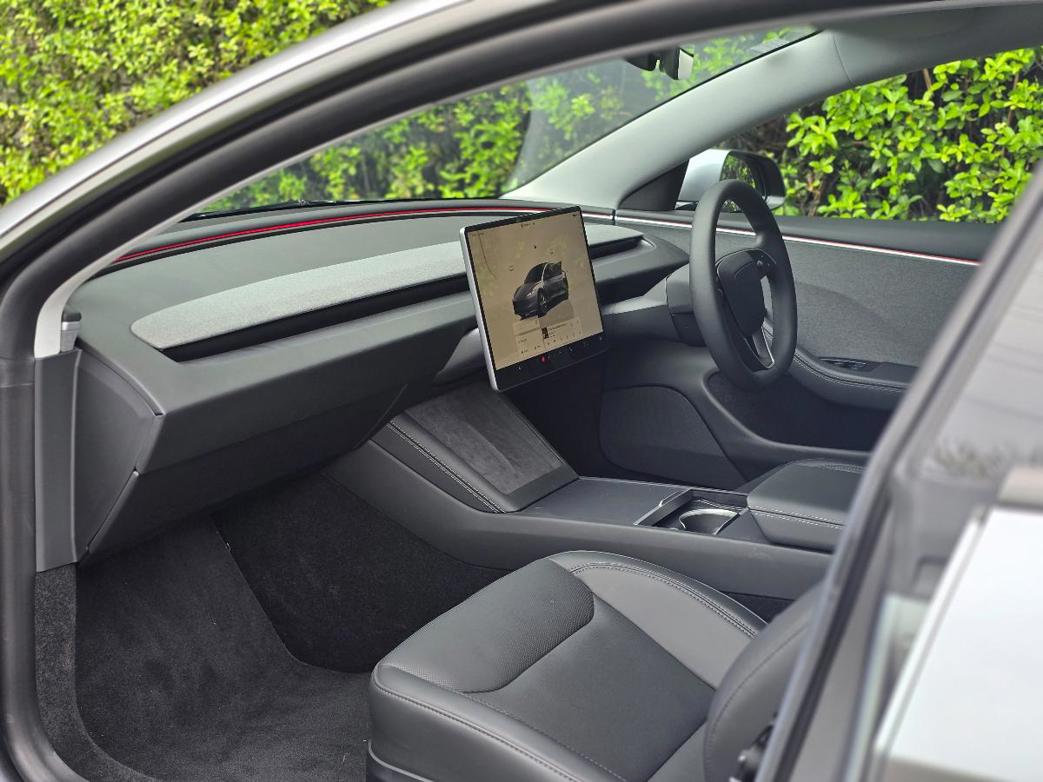
While I have never been the biggest fan of Teslas, the latest update to both the Model Y and Model 3 has vastly improved my opinion of them, with the Model Y I recently had being a genuinely grown-up car, as opposed to a novelty digital device that also happened to be a car.
And the Model 3 reinforces that feeling by being tauter, more agile and genuinely involving to drive.
When you are actually doing the driving that is, as our car did come with Full Self Driving (Supervised) activated, and I admit to being genuinely surprised by how good it was, and did actually use it regularly.
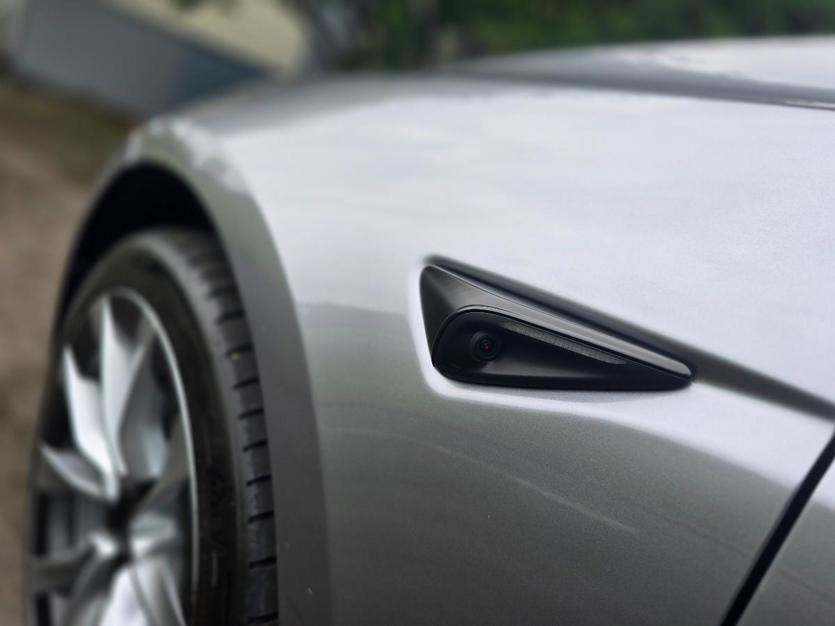
However, away from urban areas or motorways, FSD(S) is a little less impressive, which is actually fine because it is here that the Model 3 is a genuinely enjoyable car to drive. It feels lighter than its 1760kg curb weight and, as a result, more agile and eager.
The Model 3 feels more than fast enough for most people, with strong overtaking and a nice, instant response down low.
While the car we drove was a RWD model, you would genuinely be hard pressed to actually pick that in the vast majority of occasions. This is partly because Tesla has become very good at getting power to the road smoothly (something that hasn’t always been the case), but also because the 208kW RWD doesn’t really have the power to unsettle the rear end.
Out on a winding road this translates into a swift point-to-point car that just gets about the business of flowing nicely through corners with more than enough power to punch it out of them, but not enough to ever catch you out.
Tesla claims the Long Range RWD will scamper to the open road legal limit in 6.1 seconds, but it certainly doesn’t feel that quick and is likely a result of Tesla using a one foot rollout to measure its 0 to 100 times.
Tesla says this is “industry standard”, but it depends on what industry you are talking about - no other carmakers uses a one foot rollout to measure claimed 0 to 100 times, while US magazines like Car and Driver and Road & Track do use it because it is a leftover from early drag racing when timing equipment wouldn’t actually trigger until the car was moving.
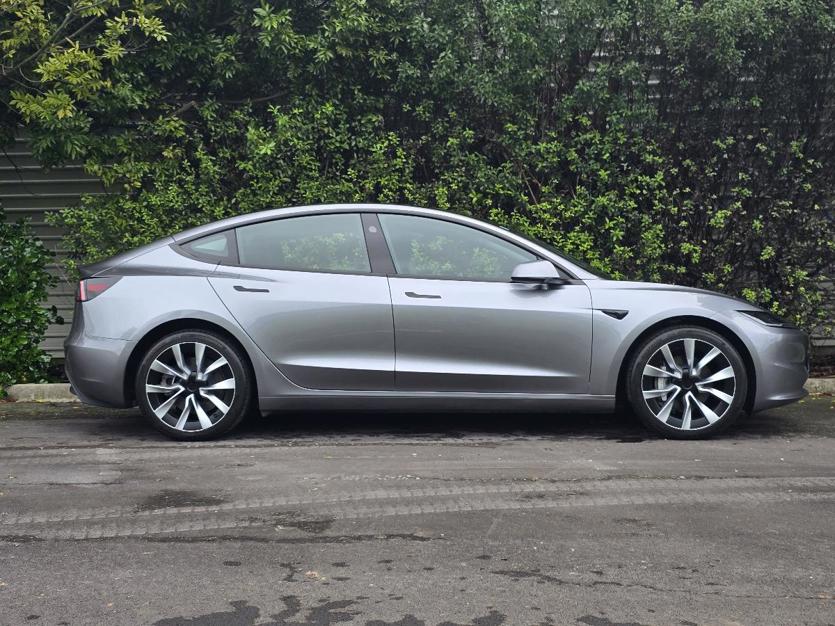
But anyway, the Model 3 feels more than fast enough for most people, with strong overtaking and a nice, instant response down low.
The indicator buttons on the steering wheel? Well… no, they’re still a stupid idea, but they didn’t actually bug me as much as I expected.
Ride comfort is also massively improved, with a firm and well controlled ride that isn’t unsettled by imperfections, no matter how large, but also beautifully irons out smaller ones. It feels nicely taut and sporty, but isn’t crashy or uncomfortable in any way.
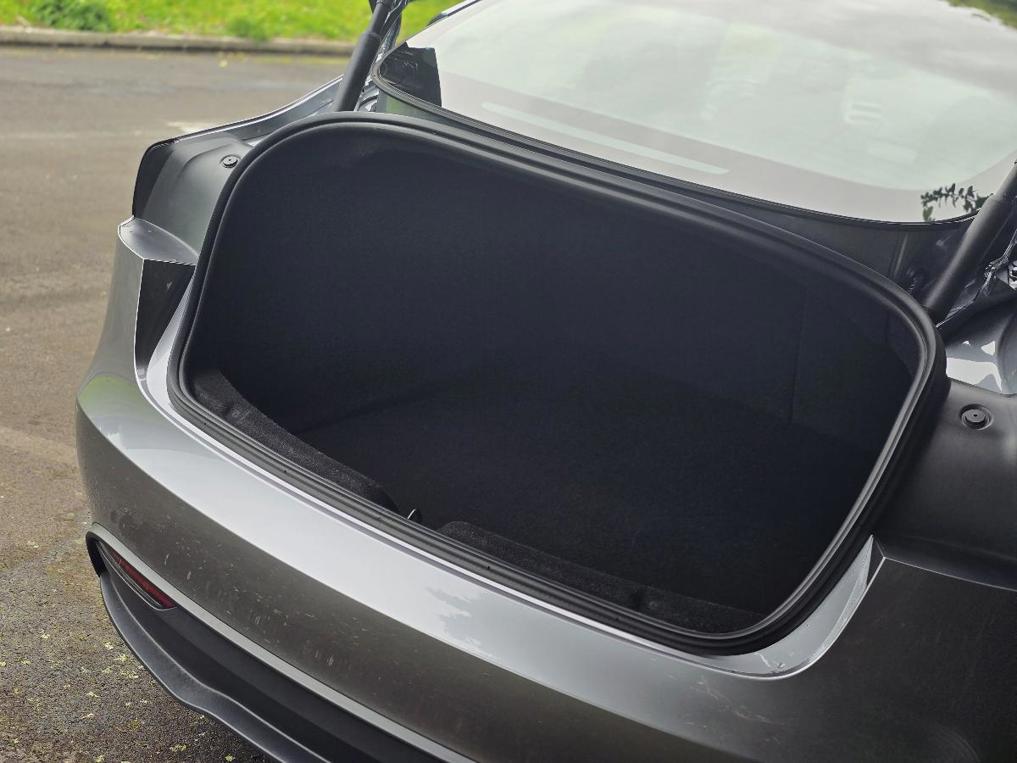
Interior quality is an area that Tesla has always been a bit patchy in, particularly in light of the fact that they like to claim to be a luxury carmaker. But the Model 3 does boast excellent build quality now and while a lot of the materials used are of a very good quality, they are still a long way off luxury competitors like BMW, Audi and Mercedes-Benz.
But that does mean that the entry level Model 3 RWD has a very good interior for its very much non-luxury $66,224 drive-away price, with excellent seats and a slick and relatively intuitive layout, despite having literally everything on one screen
The latest Model 3 has caught criticism for Tesla’s decision to abolish the indicator stalk in favour of steering wheel buttons and a physical gear selector in favour of touchscreen controls, and I will put my hand up to say that I agreed with those critics wholeheartedly.
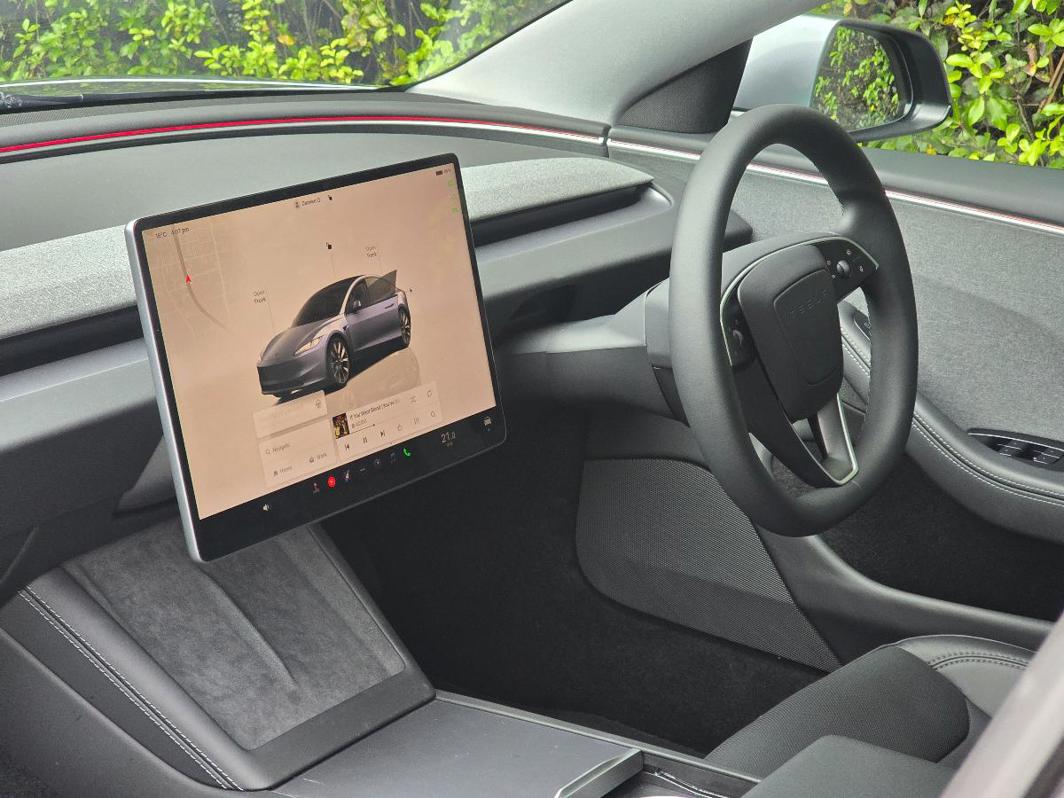
However… much like my skepticism over FSD(S), my earlier drive of a Model Y with the screen-based shifter totally changed my tune on that (it was actually excellent, with a Beta option that would even handle the low speed shifting for you), and it was the same in the Model 3.
As a $66k car the Model 3 is deeply impressive thanks to its high level of standard tech, excellent build quality, surprising comfort and genuinely engaging handling and performance.
The indicator buttons on the steering wheel? Well… no, they’re still a stupid idea (Tesla even backtracked giving the updated Model Y an indicator stalk), but they didn’t actually bug me as much as I expected, and if you use FSD(S) then it does all the indicating for you anyway.
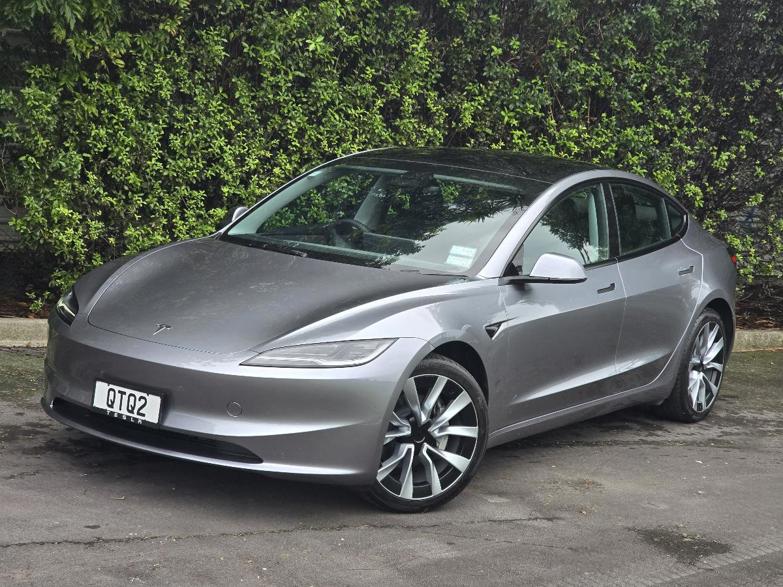
As a $66k car the Model 3 is deeply impressive thanks to its high level of standard tech, excellent build quality, surprising comfort and genuinely engaging handling and performance, however start ticking the few options it has and it gets a bit harder to swallow.
With the optional 19-inch alloy wheels ($2100), Quicksilver paint finish ($3000) and Full Self Driving (Supervised) system ($11,400), the price of our test model ballooned out to $82,724 drive away. Throw in a white interior (no, don’t) at $1700 and a home charger ($850) and mobile charging cord ($600) and you will hit $85,874.
Is it worth that? Well, that depends on how much you want FSD(S) and whether just a white one on the standard 18-inch wheels would keep you happy. And it should, because underneath all the hype and optional extras the Model 3 is now a very good car indeed.
How much is the Tesla Model 3 RWD?
The standard range RWD Model 3 we drove here kicks off the range at $66,255 drive-away, but our car had the optional $2100 19-inch alloys, $3000 Quicksilver paint finish and FSD(S) that added a hefty $11,400, for a grand total of $82,724 drive-away.
What are the key statistics for the Tesla Model 3 RWD?
The standard range RWD Model 3 packs a 62.3kWh LFP battery that is good for a range of up to 520km (with the 18-inch wheels) and a single 208kW/420Nm electric motor on the rear axle. It will scamper to 100km/h in 6.1 seconds and has a top speed of 201km/h.
Is the Tesla Model 3 RWD efficient?
The standard range RWD car has a WLTP-tested energy consumption of 13.8kWh/100km, which is genuinely impressive, and the Model 3 is pretty capable of pulling those sorts of figures in the real world too.
Is the Tesla Model 3 RWD good to drive?
Yes, it is! While you certainly don't get any traditional fun RWD antics from the Model 3, it is stil an entertaining accurate car to throw down a winding road, while it is also a superbly comfortable urban commuter.
Is the Tesla Model 3 RWD practical?
The Model 3 is comfortable and spacious, with a good array of cabin storage options. The decision to not have a physical button to open the glovebox (yep, it's on the screen...) is still an unnecessary irritation, but the spacious centre console storage largely handles the role of a traditional glovebox anyway. The Model 3 also has a massive 594 litre boot, as well as an 88 litre frunk up front.
What do we like about the Tesla Model 3 RWD?
It's just a nice car to drive, regardless of whether at slow urban speeds or enthusiastically on the open road (or even letting it drive itself), then there's the vastly improved ride and build quality, and the sheer ease of use it represents.
What don’t we like about the Tesla Model 3 RWD?
There are still a few areas where cost cutting is evident, like the hollow-sounding 'thunk' the doors make when closing and the quality of some of the plastics in the cabin. Oh, and indicator buttons on the steering wheel are a stupid idea.
What kind of person would the Tesla Model 3 RWD suit?
Where I would normally have said "people who aren't interested in cars, but want the ultimate digital device" as the answer to this question, I can honestly say that the Model 3 has now expanded its capabilities well past this group of non-car people and is a truly involving and enjoyable car for more enthusiastic drivers. No, it's still nowhere near as involving as something like a BMW 3 Series, but it is closer than it has ever been.











